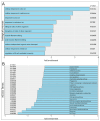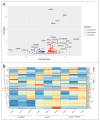Serum Induces the Subunit-Specific Activation of NF-κB in Proliferating Human Cardiac Stem Cells
- PMID: 38612406
- PMCID: PMC11012129
- DOI: 10.3390/ijms25073593
Serum Induces the Subunit-Specific Activation of NF-κB in Proliferating Human Cardiac Stem Cells
Abstract
Cardiovascular diseases (CVDs) are often linked to ageing and are the major cause of death worldwide. The declined proliferation of adult stem cells in the heart often impedes its regenerative potential. Thus, an investigation of the proliferative potential of adult human cardiac stem cells (hCSCs) might be of great interest for improving cell-based treatments of cardiovascular diseases. The application of human blood serum was already shown to enhance hCSC proliferation and reduce senescence. Here, the underlying signalling pathways of serum-mediated hCSC proliferation were studied. We are the first to demonstrate the involvement of the transcription factor NF-κB in the serum-mediated proliferative response of hCSCs by utilizing the NF-κB inhibitor pyrrolidine dithiocarbamate (PDTC). RNA-Sequencing (RNA-Seq) revealed ATF6B, COX5B, and TNFRSF14 as potential targets of NF-κB that are involved in serum-induced hCSC proliferation.
Keywords: NF-κB; PDTC; RNA-Seq; human blood serum; human cardiac stem cells; proliferation.
Conflict of interest statement
The authors declare no conflicts of interest.
Figures






References
MeSH terms
Substances
LinkOut - more resources
Full Text Sources
Research Materials
Miscellaneous

